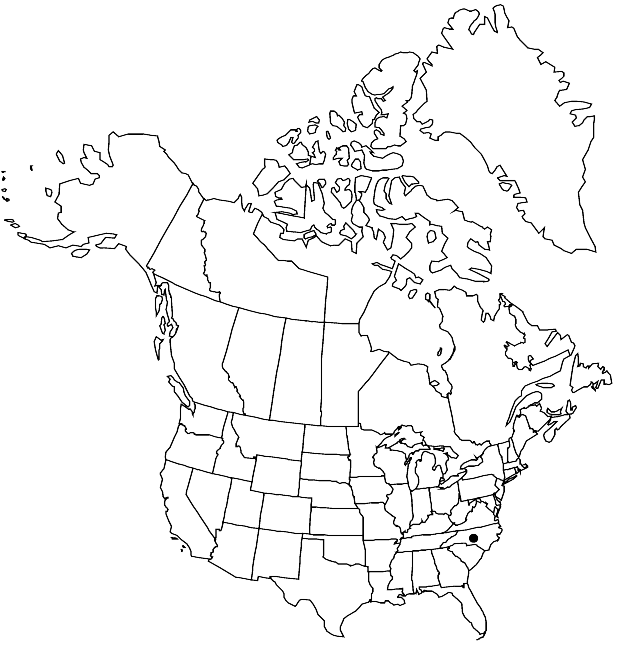Cardamine micranthera
Castanea 5: 87. 1940.
Perennials; glabrous throughout. Rhizomes (relatively short), 2–3 mm diam., (covered with extensive root system). Stems erect to ascending, unbranched or branched distally, 0.9–4 dm. Rhizomal leaves usually 3-foliolate, rarely simple, 1–8 cm, leaflets petiolulate or subsessile; petiole 0.5–5 cm; lateral leaflets subsessile, often minute; terminal leaflet (petiolule 0.4–2 cm), blade orbicular to broadly ovate, 0.5–3 cm × 5–25 mm, base rounded, margins entire, repand, or dentate. Cauline leaves 5–10, petiolate; middle leaves often simple, petiole 0.3–1.5 cm, blade rhombic to suborbicular or ovate, 1–3.5 cm × 6–22 mm, base obtuse to cuneate, margins entire, repand, or dentate; distal ones with shorter petiole, blade smaller. Racemes ebracteate. Fruiting pedicels divaricate, 9–17 mm. Flowers: sepals (ascending), oblong, 1.5–2.2 × 0.7–1 mm, lateral pair not saccate basally; petals (somewhat spreading), white, oblanceolate, 3.5–5 × 1.2–1.8 mm, (not clawed, apex rounded); filaments: median pairs 2.5–3 mm, lateral pair 2–2.5 mm; anthers ovate, ca. 0.2 mm. Fruits linear, 0.8–1.6 cm × 0.8–1 mm; ovules 16–22 per ovary; style 1.2–1.8 mm. Seeds brown, oblong to ovoid, 0.9–1.2 × 0.6–0.8 mm.
Phenology: Flowering Apr–May.
Habitat: Wet grounds along streams, seepage, gravelly sandbars, moist crevices
Discussion
Of conservation concern.
Cardamine micranthera is known only from Stokes County. It is in the Center for Plant Conservation’s National Collection of Endangered Plants.
Selected References
None.
Lower Taxa
"elongated" is not a number."thick" is not a number."dm" is not declared as a valid unit of measurement for this property.
